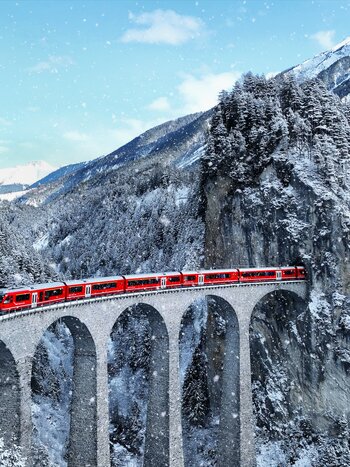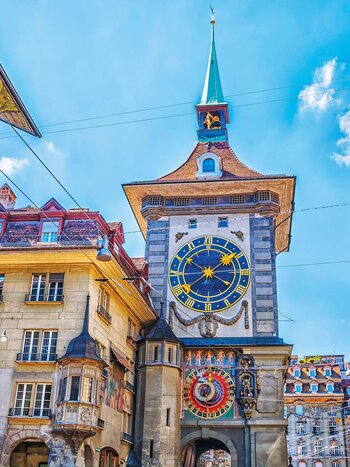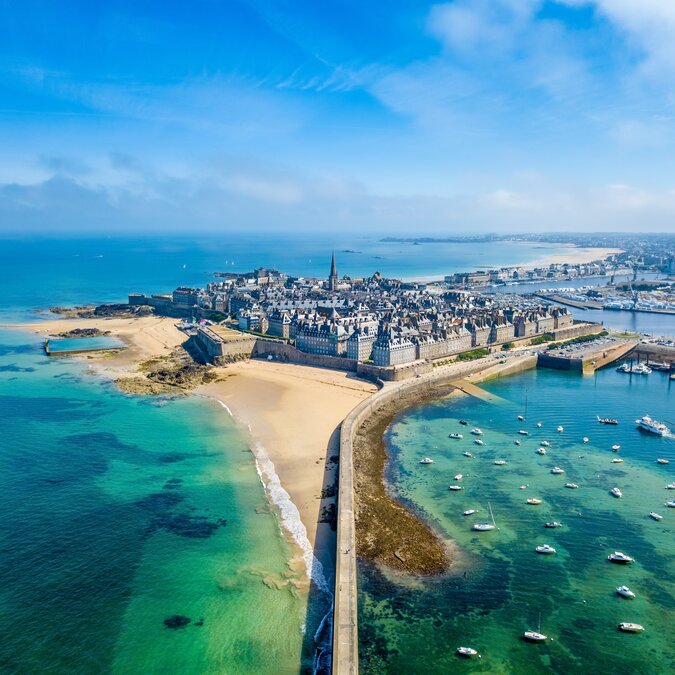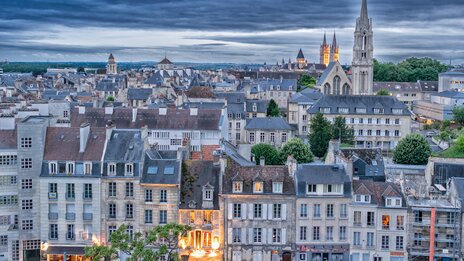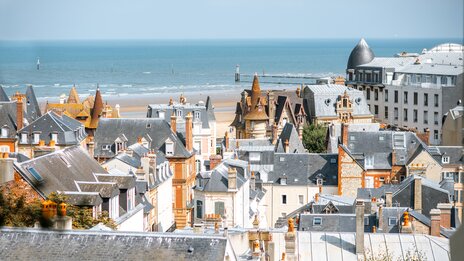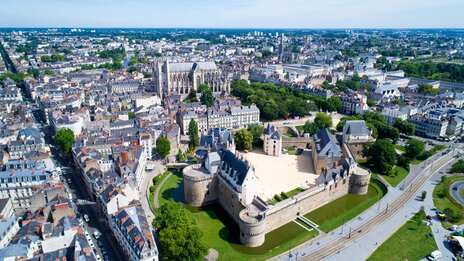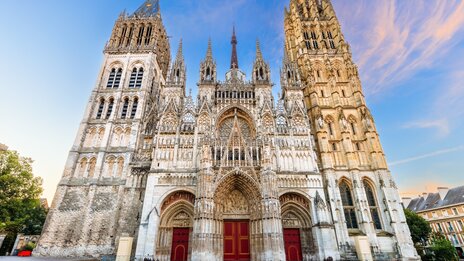Highlights
-
«Intramuros» is the name given to the historic heart of Saint-Malo, sheltered by ramparts since the 12th century. Walk around these mighty walls, admire the panorama and breathe in the sea air. Then, through the Porte Saint-Vincent, enter the picturesque maze of narrow streets. The names of the streets and squares are a reminder of the great inhabitants of Saint-Malo: Chateaubriand the man of letters, Jacques Cartier who discovered Canada in the 16th century and Surcouf the privateer who set sail on the seas of Europe and the Indies at the end of the 18th century.
-
Only the Rance estuary separates Dinard from Saint-Malo, yet the two towns are very different. The English aristocracy set their sights on Dinard in the 19th century. The resort has retained a very ‘British’ chic and charm, with its beautiful villas, striped beach tents and cosy tea rooms. Nearby, the Emerald Coast unfurls small coves, long sandy beaches and tiny harbours battered by a sea the colour of precious stones.
-
From Saint-Malo, visit Mont Saint-Michel, less than 60 km away. Without a car, you can choose between bus and train or, in summer, guided day trips. A UNESCO World Heritage Site, the Mont is awe-inspiring, with the abbey and its cloister seemingly suspended between sky and sea. At the heart of a vast sandy plain, the rock becomes an island again at high tide - a breathtaking sight!
-
It's in Brittany that you'll taste the real Breton crêpes, an inseparable part of the region's identity. But be careful not to confuse crêpes with galettes. The former is made from wheat; the latter, salted, is made from buckwheat. The recipe is simple, but using the rozell (the pancake rake) on the bilig (the griddle) is more complicated. In Saint-Malo, «l'Atelier de la crêpe» trains future crêpières and crêpiers, and you can try them out and encourage them at the training restaurant.


